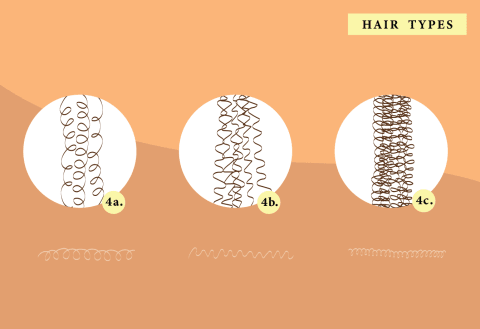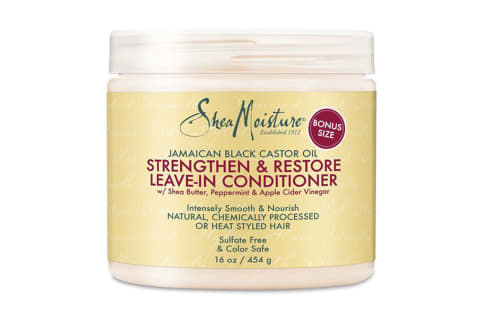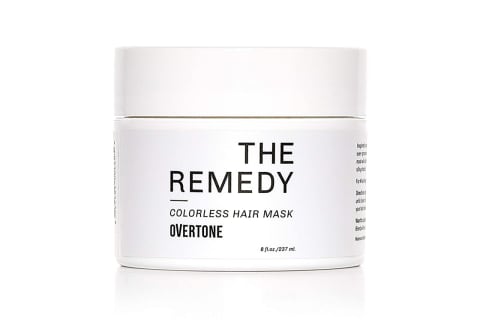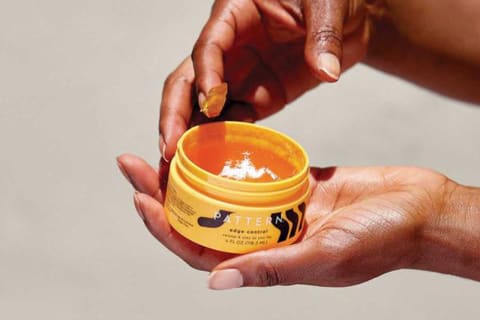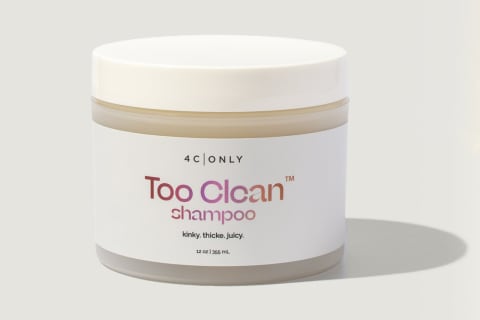While Type 1 and Type 2 are reserved for straight and wavy hair respectively, 3 and 4 are for curly and kinky-curly. Within the Type 4 kinky-curly category, there are three additional subcategories: 4A, 4B, and 4C. Each letter refers to a specific curl pattern within the general Type 4 category. Although, if we’re being entirely honest, 4C is a category that wasn’t initially included in Andre Walker’s typing system. 4C hair is typically defined as being densely packed and sometimes lacking definition. Often people with 4C hair will experience intense shrinkage—meaning that their hair can look deceptively short when it’s fully dried. And although all curly and kinky-coily hair types tend to be more delicate than straight hair, 4C hair is considered the most delicate. But aside from curl pattern or shrinkage, people with 4C hair can have coarse or superfine strands or soft versus wiry textures. Similar to other natural hair textures (i.e., traditionally types 3 and 4), the curl pattern is more easily identified on wet hair versus if it’s allowed to dry naturally when the curls have separated. As we mentioned earlier, 4C hair length can be deceptive because of shrinkage. As Starr Mason, a field education leader for Hair Cuttery Family of Brand’s commented “Please note that shrinkage is REAL. 4C hair is much longer than it appears.” But like other curlies, 4C heads can also straighten their hair—as long as they use a good heat protectant to avoid heat damage, which can alter their curls. Also, note that it’s not uncommon to have multiple curl patterns on your head. So, it’s completely normal if your general hair type is 4C but you have sections of 4B hair. If you’re concerned about uneven effects, learning how to properly style your hair to create a more uniform texture can help. If you’re just transitioning to natural after years of relaxing (or even texlaxing!), be prepared for a learning curve. And this is especially true if you refuse to big chop (cut off all your relaxed hair) and instead prolong your transition by growing out your natural hair to the desired length first. Extended transitioners will need to be mindful of breakage at the transition point where your natural and relaxed hair meets. But the following tips are great starting guides to help you on your hair journey: While protective styles can help you retain length by letting your hair rest, that won’t matter much if extreme tension leads to traction alopecia. As tempting as it is to let a braider create braids that are tighter so that your style lasts longer—don’t do it. And remember to remove protective styles within four to eight weeks after having them installed with a breather period before you opt for another one. There are three porosity levels, high, medium, and low. High porosity means that your hair allows moisture to easily slip out of the hair shaft with fully open cuticles. Medium porosity hair has regularly aligned cuticles and retains moisture properly. Meanwhile, low porosity hair has tightly aligned cuticles, and moisture can’t penetrate as easily. If you’re not sure of your porosity, this simple one-minute test will help. Temporary straight styles can include silk presses and blowouts—although you should always apply a good heat protectant first to make sure your curls pop back on your next wash day. And the added benefit of blowouts and silk presses is that you can also set your hair on bantus to create gorgeous voluminous curls. For protective styles, again there are so many options. Braids and twists are popular choices, but you can also opt for crochet styles, which can sometimes be faster to install. And there are also wigs or weaves, if you prefer. All of these styles allow you to play with color, texture, and length without damaging your hair. For best results, you should go to an experienced stylist, avoid braiding or twisting your hair too tightly, and take them down roughly four to eight weeks after getting them.


